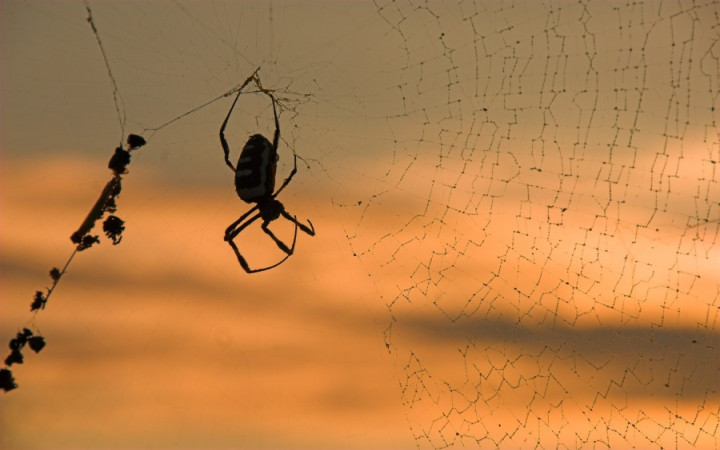Have you ever accidentally run into a spider web? You might have been surprised by how sticky it was. It can definitely be difficult to get all of the web off of your skin and out of your hair!
Why are spider webs so sticky? Spiders who weave webs use them to catch flies and other insects and small animals that they eat for food. For example, when a fly unknowingly flies into a spider web, it quickly becomes trapped. A spider's silk is sticky, but also very strong. The spider can then subdue it and have a quick meal!
If you've ever watched a spider move across its web, though, you may have noticed that it doesn't get stuck like its prey. Instead, spiders move quickly and efficiently around their webs as if they weren't sticky at all. How do they do that?
Unlike unsuspecting prey, spiders don't come into contact with their webs all at once. Instead, they move nimbly along the strands of their webs with only the hairs on the tips of their legs making contact with the sticky threads. This minimizes the chances that they'll get caught in their own trap!
To avoid sticky situations, spiders also groom themselves very carefully. Spiders routinely clean their legs of all pieces of silk and other debris that might cause them to get stuck on their webs.
Not all webs are sticky throughout, either. Many spiders only make threads with adhesive “glue" in certain parts of their webs. Other areas, especially where the spider might rest, are built without “glue" to make it easier for the spider to move around the web.
Some people mistakenly believe that spiders have oily legs that prevent them from sticking to their webs. This is not true, because spiders don't have oil glands. Recently, though, some scientists have discovered that the hair on a spider's legs may be covered with a special chemical that prevents the “glue" on the web from sticking.




